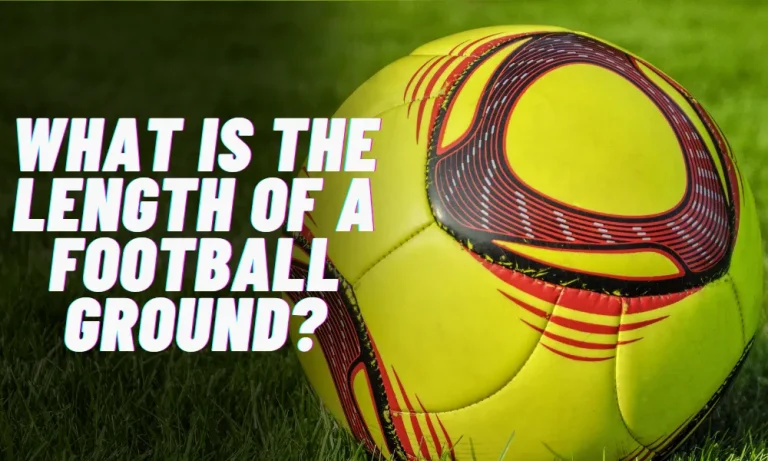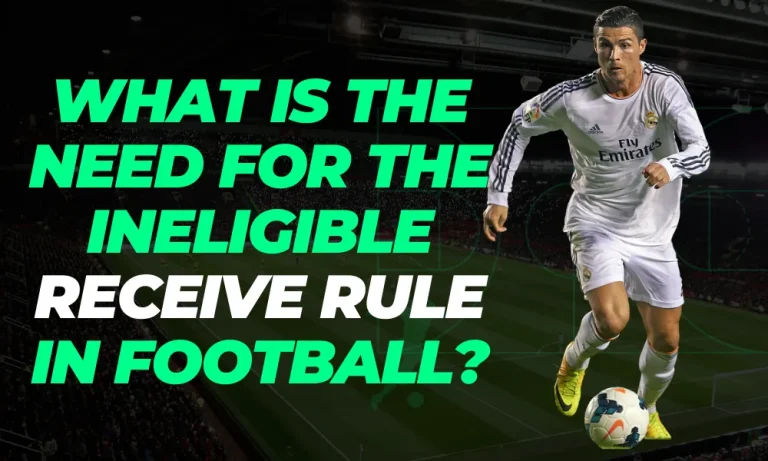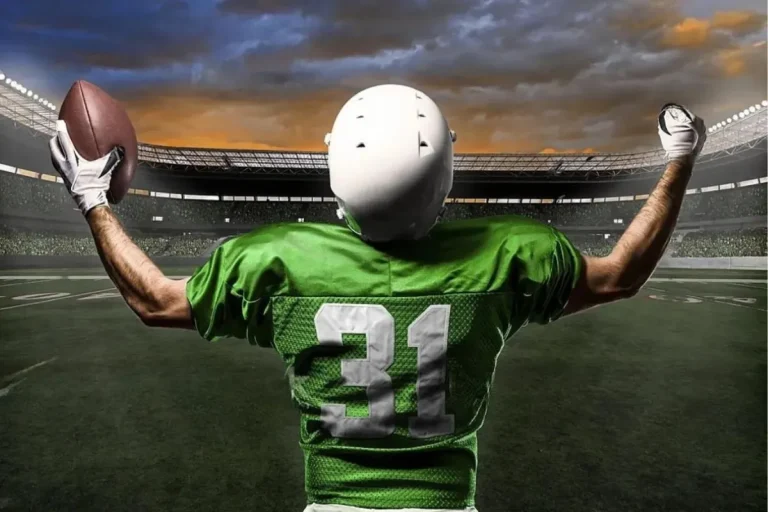How Do Footballers Communicate With Each Other?
In the fast-paced world of football, effective communication is the key to unlocking success on the field. Ever wondered how those players manage to coordinate their moves seamlessly? It’s not just about shouting at each other or exchanging high-fives.
Footballers have a unique language of their own—non-verbal cues, hand signals, eye contact—all working together like a well-oiled machine.
The Role of Non-Verbal Communication
Communication on the football field goes beyond words. Players rely heavily on non-verbal cues to convey messages and coordinate their actions seamlessly.
Body Language:
Body language is a powerful tool used by footballers to communicate with their teammates without uttering a single word.
Through gestures, postures, and movements, players convey crucial information during matches. For example:
- A raised arm may indicate an upcoming throw-in or corner kick.
- Pointing towards open spaces can signal teammates to make runs into those areas.
- Slapping hands together could mean “press” or increase defensive pressure.
Different nuances of body language help players understand each other’s intentions and make split-second decisions on the field.
Eye Contact:
Eye contact plays a significant role in establishing understanding and coordination among players. It enables quick decision-making based on visual cues exchanged between teammates. Situations where eye contact becomes crucial include:
- Passing: By locking eyes with a teammate, one player can indicate that they are ready for a pass or provide direction for where they want the ball played.
- Tactical Adjustments: Captains or leaders often use eye contact to gather team members’ attention before implementing specific strategies or making changes during gameplay.
The power of eye contact lies in its ability to create instant connections and facilitate seamless collaboration among players.
Hand Signals:
Hand signals have become an integral part of football communication due to their effectiveness in conveying specific plays or tactics quickly. These signals are widely recognized across teams worldwide. Some common examples include:
- Raised index finger indicating “go forward” or attack aggressively.
- Closed fist suggesting “hold back” or defend cautiously.
- Palm facing downwards signaling “drop deep” or fall back defensively as a unit.
Verbal Communication Techniques
When it comes to communication in football, verbal techniques play a vital role alongside non-verbal cues. Let’s delve into three key methods employed by players: shouting instructions, team huddles, and on-field microphones & earpieces.
Shouting Instructions:
In the midst of an intense match, players often rely on their voices to direct teammates and convey important messages.
Vocal commands help establish a clear line of communication amidst the chaos on the field. Specific phrases or words are commonly used for effective instruction:
- “Man On!” alerts a teammate that an opponent is approaching.
- “Switch!” suggests shifting the play from one side of the field to another.
- “Hold Up!” indicates that a player should retain possession rather than making an immediate pass.
These vocal cues ensure quick decision-making and coordination among teammates during gameplay.
Team Huddles:
Team huddles serve as crucial moments for strategizing and motivating players. In these gatherings, coaches or team captains discuss tactics and inspire their squad.
Pre-determined codes or keywords are often spoken within huddles to maintain confidentiality while conveying critical information:
- A code word might be assigned for executing specific set-piece routines without alerting opponents.
- Hand signals combined with verbal instructions can indicate changes in formation or tactical adjustments.
By utilizing team huddles effectively, teams enhance their cohesion and synchronize their actions toward achieving common goals.
On-field Microphones & Earpieces:
Technological advancements have revolutionized communication possibilities on the football pitch. On-field microphones and earpieces enable real-time interaction between players/coaches during matches.
These devices facilitate seamless exchanges of information and strategies without relying solely on shouts or gestures:
- Players wearing earpieces can receive instant instructions from coaches regarding positional changes or game plans.
- Coaches equipped with microphones can provide feedback directly to individual players during gameplay.
Tactical Communication Strategies
Effective communication in football goes beyond basic instructions and extends into tactical strategies. Let’s explore three key aspects of tactical communication: positioning calls, overlapping runs/passes/areas calls, and set piece coordination.
Positioning Calls:
Defenders play a crucial role in maintaining a solid defensive line-up. Through positioning calls, they communicate with each other to ensure proper alignment and coverage on the field. These calls become critical in scenarios such as:
- Tracking Runners: Defenders alert teammates about opponents making attacking runs behind their defensive line.
- Defensive Shifts: Players communicate positional adjustments when faced with quick attacking movements or switches from the opposing team.
- Offside Traps: By coordinating through specific cues or vocal commands, defenders strategically catch attackers offside.
Positioning calls help defenders maintain organization amidst dynamic gameplay, reducing gaps that opponents can exploit.
Overlapping Runs/Passes/Areas Calls:
Attackers often coordinate their movements through verbal cues to create scoring opportunities.
Overlapping runs/passing areas involve players moving into spaces left open by their teammates. Verbal commands are used to communicate these strategies effectively:
- “Overlap!” signals a teammate to make an advancing run down the flank while another player provides support.
- “Drop it back!” instructs a player to pass the ball backward for someone else to move forward into space.
Such coordinated actions disrupt defenses and allow attackers to penetrate opponent lines more efficiently.
Set Piece Coordination:
During set pieces like free kicks or corner kicks, clear communication is essential for successful execution. Players must coordinate their movements and positions precisely:
- Verbal commands indicate desired movement patterns during free kicks (e.g., “Near post,” “Far post,” or “Dummy”).
- Corner kick routines involve pre-determined codes communicated through keywords or hand signals for specific plays (e.g., short corner vs. far-post delivery).
FAQs
1. How do footballers communicate non-verbally on the field?
Footballers use body language, such as gestures, postures, and movements, to convey messages to their teammates. They rely on visual cues like raised arms or pointing to indicate specific actions or tactics.
2. What role does eye contact play in football communication?
Eye contact helps establish understanding and coordination among players. It allows for quick decision-making based on visual cues exchanged between teammates during passing plays or tactical adjustments.
3. What are some common hand signals used by footballers?
Footballers often use hand signals to indicate plays or tactics. Examples include a raised index finger indicating “go forward,” a closed fist suggesting “hold back,” and a palm facing downwards signaling “drop deep” defensively.
4. How do defenders communicate positioning calls during matches?
Defenders call out positions to maintain proper defensive alignment through verbal communication. They alert teammates about opponents’ runs behind the defensive line and coordinate shifts or offside traps using specific vocal commands.
5. How do attackers coordinate overlapping runs/passing areas through verbal cues?
Attackers communicate with each other through verbal commands like “overlap!” which signals one player to make an advancing run down the flank while another provides support. Other instructions may involve dropping the ball back for someone else to move into space effectively.
Conclusion
In the dynamic world of football, communication is the glue that holds teams together. Footballers rely on a combination of non-verbal cues and verbal commands to convey messages effectively.
From body language and eye contact to hand signals and tactical strategies, these athletes have mastered the art of silent collaboration. Through their unique language, they navigate the pitch as one cohesive unit, striving for victory with every coordinated move.




